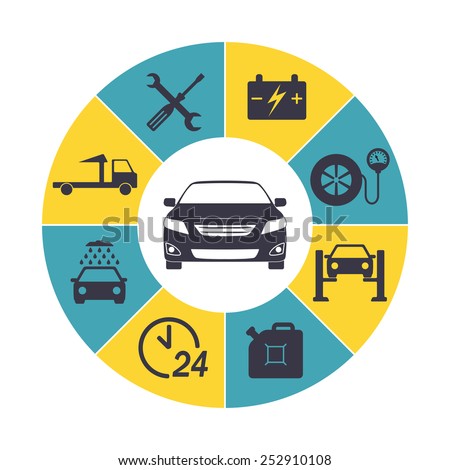Assessing Your Car'S Warning Indicators: What They Truly Share
Assessing Your Car'S Warning Indicators: What They Truly Share
Blog Article
Published By-Boye Dalgaard
When you lag the wheel, those radiant caution lights on your dashboard can be a little bit complicated. Do you understand what they're attempting to tell you regarding your vehicle's health? Comprehending the relevance of these lights is important for your security and the longevity of your lorry. So, the following time among those lights turns up, wouldn't you wish to understand its message properly and take the necessary actions to resolve it?
Common Caution Lighting and Interpretations
Recognize common caution lights in your vehicle and comprehend their meanings to make sure risk-free driving.
The most normal warning lights consist of the check engine light, which signals concerns with the engine or discharges system. If this light comes on, it's essential to have your vehicle inspected immediately.
The oil pressure cautioning light indicates low oil pressure, calling for instant focus to stop engine damage.
A blinking battery light might recommend a defective billing system, possibly leaving you stranded otherwise attended to.
The tire stress monitoring system (TPMS) light alerts you to low tire pressure, affecting automobile stability and fuel efficiency. Disregarding this can lead to hazardous driving conditions.
The ABS light shows a trouble with the anti-lock stopping system, compromising your ability to quit promptly in emergencies.
Lastly, the coolant temperature alerting light warns of engine getting too hot, which can cause severe damage if not dealt with quickly.
Understanding https://www.ratchetandwrench.com/articles/12409-email-marketing-six-tips-for-better-results will help you address issues promptly and preserve secure driving conditions.
Importance of Prompt Focus
Comprehending the typical caution lights in your vehicle is only the primary step; the relevance of promptly addressing these cautions can not be highlighted enough to guarantee your safety on the road.
When a caution light brightens on your dashboard, it's your vehicle's means of communicating a prospective problem that needs interest. Ignoring these warnings can cause much more extreme issues in the future, endangering your security and potentially costing you extra in repairs.
Trigger focus to cautioning lights can avoid failures and accidents. For instance, a flashing check engine light can suggest a misfire that, if left ignored, could create damages to the catalytic converter. Addressing https://ecu-remapping52839.blog4youth.com/30505981/a-step-by-step-refine-for-cleaning-and-protecting-your-automobile-s-interior without delay can conserve you from an expensive repair work.
In a similar way, a brake system warning light may indicate reduced brake fluid or worn brake pads, essential components for your safety when driving.
Do It Yourself Troubleshooting Tips
If you notice a warning light on your dashboard, there are a few DIY troubleshooting suggestions you can try before seeking expert aid.
The very first step is to consult your car's manual to recognize what the specific caution light shows. Occasionally the issue can be as basic as a loose gas cap setting off the check engine light. Tightening up the gas cap may resolve the trouble.
An additional typical issue is a low battery, which can activate various alerting lights. Examining the battery connections for rust and ensuring they're protected might repair the trouble.
If a warning light lingers, you can attempt resetting it by detaching the car's battery for a couple of minutes and afterwards reconnecting it. Additionally, inspecting your car's liquid levels, such as oil, coolant, and brake liquid, can aid fix advising lights connected to these systems.
Conclusion
Finally, comprehending your cars and truck's warning lights is crucial for maintaining your vehicle running efficiently and securely. By promptly resolving these signals and recognizing what they indicate, you can prevent pricey fixings and potential break downs.
Remember to consult your vehicle's guidebook for particular information on each advising light and do something about it as necessary to ensure a trouble-free driving experience.
Stay educated, stay secure when traveling!
